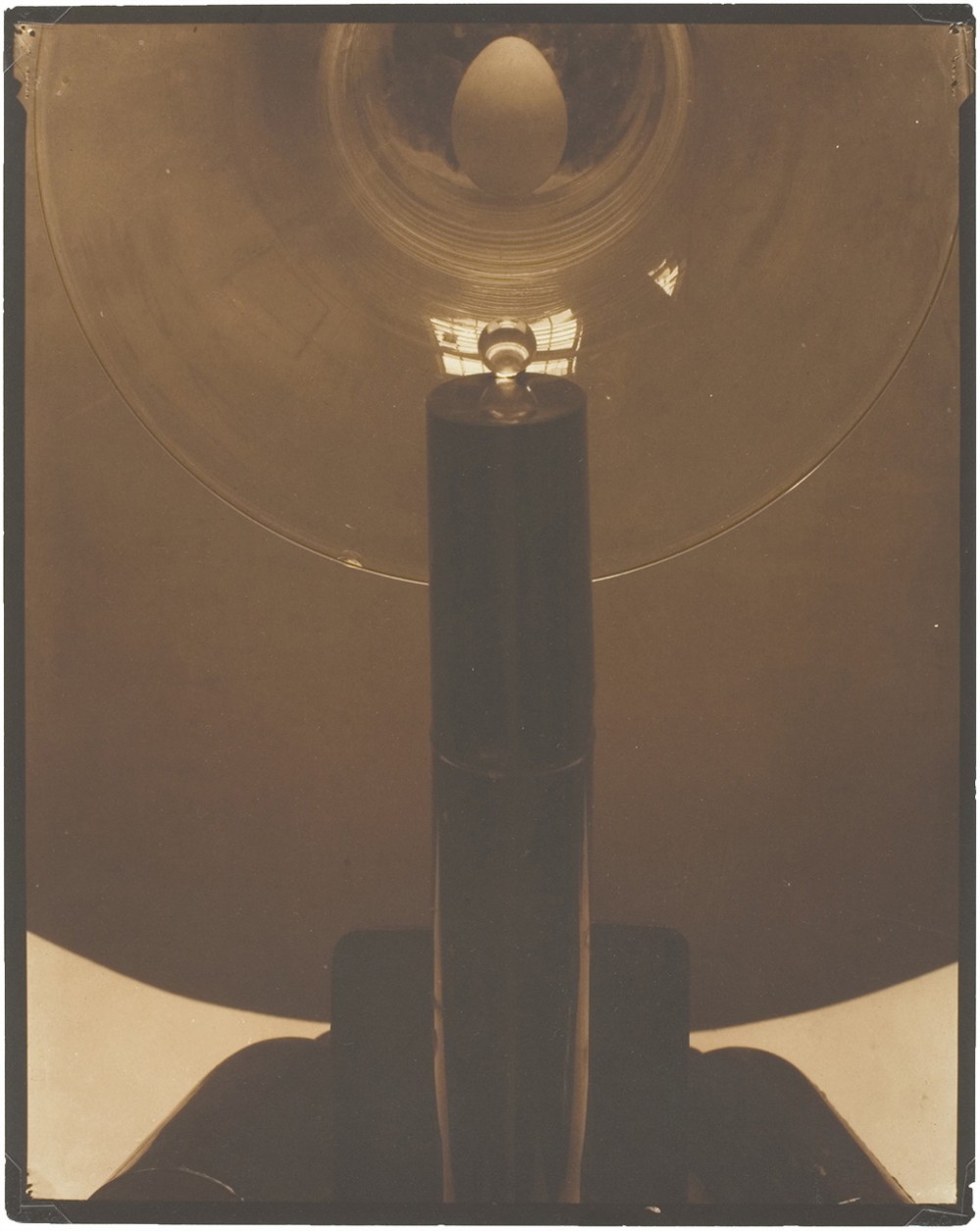While Steichen’s military experience challenged his views on photography, at the close of the war his future as an artist was unclear. After briefly contemplating a civilian career in aerial photography, he returned to his home in Voulangis, France, and began making still-life experiments prompted by his interest in modernism and straight photography. These images of objects from his home and garden, which Steichen later referred to as “finger exercises,” were in fact formal studies of shape, volume, scale, and tone that laid the foundation for the techniques that he would employ as a commercial photographer. They were his attempt at obtaining, in poet Carl Sandburg’s words, “the maximum amount of realism.” This image comes from a series in which he constructed visual interpretations of Albert Einstein’s theories regarding the space-time continuum, using common objects as symbols.
Figure 1. Edward J. Steichen (American, born Luxembourg, 1879–1973). Triumph of the Egg, c. 1921. Gelatin silver print; 24 x 19.1 cm. Bequest of Edward Steichen by direction of Joanna T. Steichen and George Eastman House, 1982.314. © 2015 The Estate of Edward Steichen/Artists Rights Society (ARS), New York.

